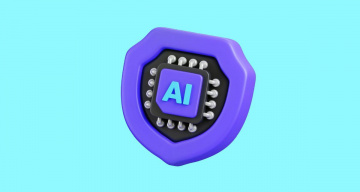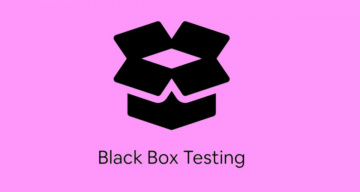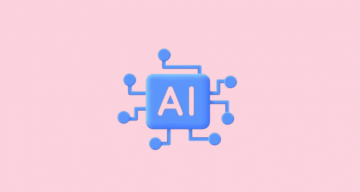To keep up with the rapidly changing business demands, you need to constantly adapt to new technologies and working methods — it is obvious.
Therefore, in the IT world, the main trend today is to move away from a sequential approach to sprint software development, e.g., a transition from the Waterfall model → to the Agile method. The latter provides improved product quality, reduced risks, faster delivery and increased customer satisfaction.
😃 Let’s talk about the benefits of Agile development in detail!
Why Should You Implement Agile Workflow Processes in Your Business?
The Agile methodology is a modern approach to software development, which allows companies to quickly adapt to ever-growing customer requests and maintain competitiveness in the market. And now it is the main progressive method of creating digital solutions among modern project teams.
Advantages are possible due to several factors:
→ Testing. An essential step of the Agile workflow process. Moreover, the tests are not carried out at the final stage of software development only but after each iteration. It allows you to identify errors at an early stage and receive detailed feedback from customers. So fixing bugs is cheaper, and product functionality meets all the requirements of your clients.
→ All stakeholders are involved into development at all stages so that they can change the project according to market needs.
→ Teams don’t wait for assigning tasks from the manager. They have high responsibility, independently prioritizing and building their work schedules. In addition, such teams undergo continual improvement and learn new skills. It also positively affects the quality of the final product.
→ Increasing customer satisfaction. Agile methods allow you to create software that fully satisfies the needs of the product owner and other stakeholders. Furthermore, this development method has another benefit: Agile workflow significantly speeds up the product’s time to market, giving the client an advantage over competitors.
→ Risk reduction. Thanks to the iterative method, all workflows become transparent to the entire team as they are easier to predict and control. Accordingly, the risk of making a mistake is significantly reduced. However, if something goes wrong, the problem with your Agile project is solved with minimal losses. Agile workflows are divided into short sprints, and there is always the opportunity to save any work area and use your assets in the future.
→ High work efficiency. Agile teams use more accurate metrics to evaluate their performance than traditional development approaches. For example, the Waterfall model focuses on metrics that measure how well a project falls within budget and timeframe. On the contrary, Agile methodology focuses on metrics that help track work processes efficiency and team results. It helps you identify bottlenecks and eliminate them timely.
Implementing the Agile workflow to your business has many advantages. However, it is better to use traditional methodologies in some projects. As a rule, these are projects with clearly defined time frames, budgets, and product requirements.
Let’s systematize the differences between traditional workflows (using Waterfall as an example) and Agile software development.
🔽 Comparison Table Waterfall and Agile approaches:
| Waterfall | Agile workflow |
| Linear development process. All stages follow a cascade, one after another, and edits are available only at the end of development. | Agile development process. You can return to the previous stage anytime, make changes, or correct errors. |
| Testing completes the software development cycle. | Tests are run after each iteration. |
| Stakeholders do not affect the development process. | Effective team collaboration. Team members, testers, and stakeholders are involved in the project. |
| The timeline and budget are clearly set before the project starts. | Financial and time costs may vary depending on the emergence of new project requirements. |
Intermediate summary: The Agile workflow model is an approach to software development adopted by more and more teams, as talks on top. It allows them to become customer-centric and create high-quality digital solutions without sacrificing time to market.
Various types of Agile workflow
Agile methodology is a general term that combines several approaches to software development. They have both similarities and unique features. Below are the most popular Agile workflow models:
Kanban
This non-iterative approach to working with projects is based on a lean development process. The essence of this methodology is a continuous assurance of the software product’s quality due to the close interaction of all Agile team members.
Kanban is based on three principles that help developers achieve excellent results:
- Development process visualization. To this end, teams actively use the Kanban board, a tool that visually demonstrates the tasks that developers face at each stage.
- Work in progress limits (WIP). WIP limits mean the number of tasks to be completed at each development stage. Compliance with this principle allows you to objectively distribute resources and avoid downtime and violation of deadlines.
- SDLC optimization. The methodology has one of the main characteristics of Agile software development. It allows you to make changes during development, optimizing this process.
All of the above principles are implemented at each stage. There are seven of them in Kanban:
- Product backlog
- Requirements
- Design
- Development
- Testing
- Deployment
- Done
Extreme programming (XP)
It is an approach to developing digital solutions focused on gathering customer feedback and constant improvement of the digital solution based on this information.
Apps developed according to this principle are highly adaptable to changing customer expectations.
XP Features:
- No mediator between customers and developers;
- Division of the workflow into small pieces, for each of which the team draws up a plan and makes adjustments during development;
- Focus on process automation, including testing, reducing the time to market.
Extreme programming includes such development stages:
- Coding
- Testing
- Listening
- Designing
Scrum
It is one of the most popular Agile software development techniques. It is based on a unique philosophy. It sounds like this: at the start of development, the team cannot know everything about the project. Knowledge comes with experience, and all decisions should be made based on tracking current results.
The main value of this technique is that cross-functional teams easily adapt to the rapidly changing realities of the software development market. It is facilitated by the following features of the approach:
- Dividing workflow into small iterations, each of which has clear goals and objectives. It helps different team members understand their roles in the project.
- Sharing Agile Values, especially the one that says: product improvement should be achieved through frequently repeated releases.
- Project Structuring, which allows the team to follow the intended goals. An essential role in this process belongs to well-established team collaboration.
- Self-organizing teams, accustomed to acting on their own. The task of the leader – the Scrum master – is not to single-handedly manage the project but to allow the team to work more efficiently through motivation, training, and help in solving problems.
👨👩👧👦 Teams that have adopted Scrum follow these five steps during software development:
- Creation of product backlog items;
- Sprint planning process;
- Sprint development cycle;
- Product testing and demonstration;
- Conducting a retrospective and next sprint planning.
Please note: Scrum is not only a method of working on a project but also a framework for Agile workflow management.
Crystal
It is the most customer-centric kind of Agile workflow. Its principle is that a person is the main asset when creating a digital solution. Developers should focus on people when working on software: it must fully satisfy people’s needs.
Distinctive features of Crystal:
- Flexibility. At the beginning of work on a project, the team does not determine the methods and tools to use. They select them during development based on technical and business requirements.
- Adaptability. In Crystal, everything can be customized to the goals and needs of a particular project, including team size. It can vary from a few people (less than six) to 200+ professionals for large projects.
- Frequent Delivery. Testing and releases of products must be provided frequently, depending on the scope of the project, e.g., every week, month, or quarter.
- Continuous Communication. Team members constantly communicate with each other as they work on the project. They also regularly hold reflective seminars to discuss ways to improve their effectiveness.
Agile Unified Process (AUP)
This iterative and incremental method is a simplified version of the Unified Process (UP). It contains elements of UP and Agile: for example, it supports test-driven development and offers agile modeling.
AUP is based on six principles:
- Possibility of interactive learning. The team does not need to study complex documentation to apply this methodology. All processes are described simply and clearly, and there is also the opportunity to learn.
- Flexibility. AUP fully shares the Agile philosophy and is guided by its principles while working on the project.
- Technology stack independence. By choosing AUP, you can continue to use the tools you prefer the most.
- Adaptability. The Agile unified process can be tailored to the needs of a particular team or project.
- High level of abstraction. No need to describe all the details of working on the project.
Agile unified process consists of four sub-processes:
- Modeling
- Implementation
- Testing
- Deployment
Feature-driven development (FDD)
This type of Agile workflow means developing software that focuses on its features. This Agile workflow model has the following features:
- An iterative approach to development;
- Short and frequent cycles;
- A small amount of documentation;
- High development speed.
The implementation of FDD involves five stages of work:
- Model creation.
- Making the list of features to implement.
- Planning core features.
- Coding each feature.
- Adding this feature to the main build.
To select a type of Agile workflow, which will be right for you, focus on the needs of your company and the goals of a particular project.
4 Steps to Building Effective Agile Workflow
If your team uses a traditional approach to software development, moving to Agile practices may be challenging for you. To implement Agile methodology in your business processes simply and painlessly, we recommend doing it in four stages:
- Promoting the principles of Agile. Successful application of Agile methodology depends on how much your team members tolerate the principles of this methodology. Let Agile Manifesto become a handbook for your employees and ensure they completely switch to an Agile mindset.
- Choosing the proper framework. Make sure in advance that the team is comfortable working with the new methodology. Jointly analyze the pros and cons of each of them and decide on the one that best meets the needs of the team and the project.
- Creation of a project roadmap. The efficiency of moving to a new development method depends on how clear it is to each team member. Write a plan of your workflow processes, specify the features of using various tools, and determine the timeline and priority work areas.
- Formation of cross-functional teams. Select some people necessary to complete the project and assign roles and clear responsibilities to each. Although Agile allows some freedom of activity on the project, you still need the help of a manager.
After that, you can start working on the project. Let’s take a look at the phases of this process.
🤔 How to Create Premium Software Step-by-Step?
Stages of Agile Workflow
The Agile workflow lifecycle may differ slightly depending on the chosen work model, but in any case, it will contain six main stages described below.
#1: Definition of a Project Idea
At this stage, the team discusses the concept of the project. Formulate tasks to be performed and analyze available financial and technical resources to estimate the feasibility of the idea.
#2: Creation of Sprint Teams
After creating the project concept and determining its main ideas, it is time to assemble sprint teams and assign each member their own responsibilities. Set deadlines for completing tasks to avoid exceeding the time limits agreed upon with the customer.
#3: Iteration
When teams are assembled, you can start working on the project. Previously, we have discussed that Agile process flow consists of iterations, i.e., periods during which the team works on the part of the functionality and goes through all the development phases.
During the first iteration, the product should not be overloaded with a large number of functions. Additional functionality is better to implement at later stages.
#4: Release
This step involves finding and fixing errors. After the team is convinced that the code does not contain errors, you can proceed to the final iteration. The product moves on to the production stage.
#5: Production
At this stage, the product is launched and meets customers for the first time. It is vital to provide a software solution with quality support. It will solve all problems identified by real users so that you can fix them in the shortest possible time. You can update iterations and implement additional functionality during production.
#6: Retirement
If the app is outdated and you want to replace it with a newer version, the current software must be stopped. For example, your software product loses compatibility with modern systems. Users must be informed in advance about the end of support for the app and the transition to a new digital solution.
Agile Project Management: Its Key Values and Principles
In traditional project management, the manager’s task is to draw up a clear plan to prevent unforeseen project changes. It is completely contrary to the Agile approach, which supports any transformations during development. In this case, a project manager’s responsibility includes assisting the team and product in adapting to new requirements, not preventing those changes.
Principles and values of Agile Project Management are described in Agile Manifesto – the main document of the methodology.
4 Core Values of Agile Project Management:
- People and their interactions are more important than tools and processes.
- A software product should be valued more than detailed documentation.
- Mutual understanding with the customer is higher than business negotiations.
- The ability to make changes is more important than clarity and structure.
12 Principles of Agile Project Management:
- The purpose of Agile workflow implementation is to launch digital products that fully meet customer expectations.
- Changes are available at the latest stages of software development to maintain competitiveness and value for customers.
- Frequent product releases are required. Their time can vary from several weeks to several months, depending on the scale of the project.
- Effective team collaboration: developers and stakeholders are actively involved in the development process.
- The team must be motivated to achieve optimal results. Professionals must obtain all the necessary resources.
- The effectiveness of the team is ensured by constant communication with the manager “face to face.”
- The product’s success is an indicator of your progress.
- The quality design of a digital solution and technical excellence can increase flexibility.
- All processes should be as simple and clear as possible to maximize profit.
- Implementation of Agile methodology increases sustainability and stability among developers, consumers, and stakeholders.
- Agile workflow raises the self-organization of teams. It can push developers to create unique solutions and use advanced technologies and tools.
Teams quickly adapt to changes and remain efficient, as they are initially ready for frequent releases and updates.
Implementation of Agile development workflow will allow you to prepare your company for future scaling and transformation. Your team will be ready for the rapidly changing demands of today’s software market. Stick to Agile principles and values, choose the most suitable Agile workflow model, proceed to work with this methodology in stages, and soon you will realize all the benefits of the Agile environment for your business.







